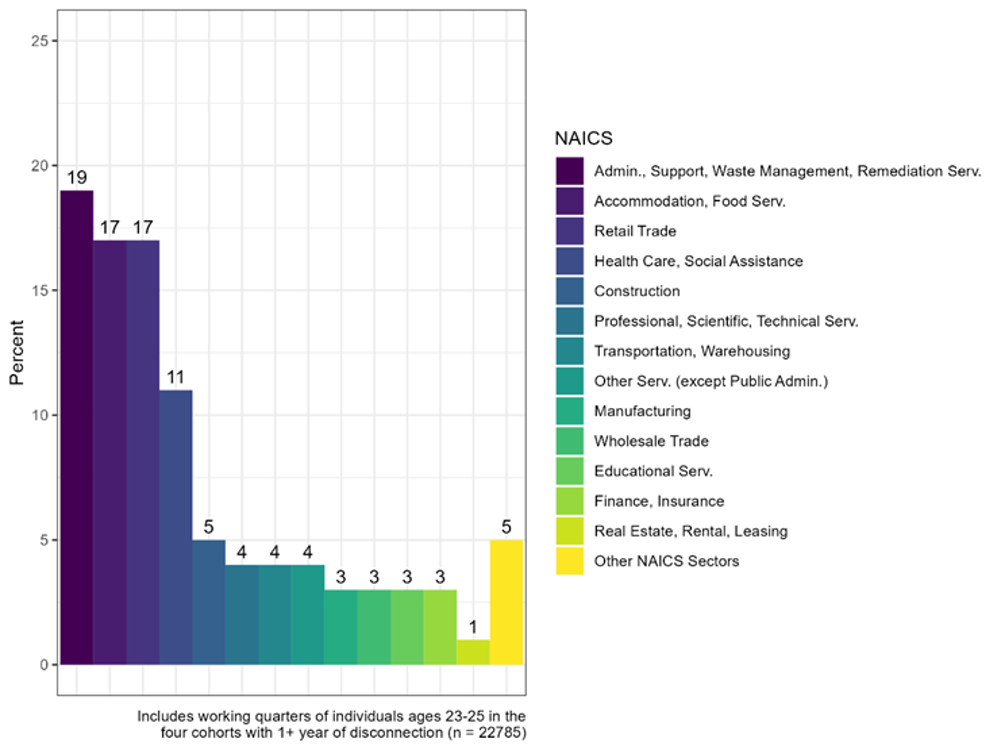Examining how early disconnection shapes long-term wages and workforce outcomes
This section focuses on the downstream effects of disconnection. For all individuals reporting incomes during any quarter, we took the average wage for working quarters (zeros are excluded) for the two years after the OY panel was completed. There are substantial differences in the wage outcomes measured for youth who had past OY status and those who did not. Furthermore, intensity of OY status is also correlated with differences in downstream wages. While these are not causally identified, this provides evidence that experiences as OY matter for earnings down the road.
The first plot separates the panel into males and females, then splits those groups into groups with persistent disconnection (any), less disconnection (1-3 quarters), and no instance of disconnection. Within both sexes, more disconnection from 16-24 is associated with lower wages after 24. This plot also reminds us that other structural factors must be considered, as we can see that males with low disconnection still earned slightly higher wages than females with zero disconnection.
Avg. Conditional Wages after Age 24, by Sex and Past Experience with OY Status during Ages 16-24

The following interactive plot looks at similar data but slices youth into those with any persistent disconnection and those without persistent disconnection, again looking only at wages from working quarters. The youth are also divided into their Texas State House districts (points). Both on average and in every district, those without past OY periods earn more than those with past disconnection. In most cases, the difference is substantial ($15,000 is typical). Again, the plot reveals nuance in the relationship, as youth with zero disconnection, themselves, tend to earn less when they come from districts with high rates of disconnection. This is an artifact of confounding forces that likely cause both OY and present individuals with structural disadvantages in other areas.
Avg. Conditional Wages after Age 24 for Youth with and without Past OY Status during Ages 16-24 by Texas State House District
The final two plots examine the NAICS codes for youth with and without past persistent OY for the jobs they work after age 24. For each youth, we use the job with the most reported income. One caveat is that this output is from an earlier version of our data generation routine and will soon be updated, using the newer methods. It should still be similar to the updated version, though.
One takeaway here is that youth with past OY experiences are far more concentrated in their top three and/or four industries than their peers without past OY periods, even though both are observed in the same three industries. In a sense, this is evidence that working adults with past OY have less flexibility and are more likely to end up in a smaller subset of industries.
Not Former OY: Frequency of Industries of Work after Age 24 for Young Adults with Past Persistent OY Status

Former OY: Frequency of Industries of Work after Age 24 for Young Adults with Past Persistent OY Status

